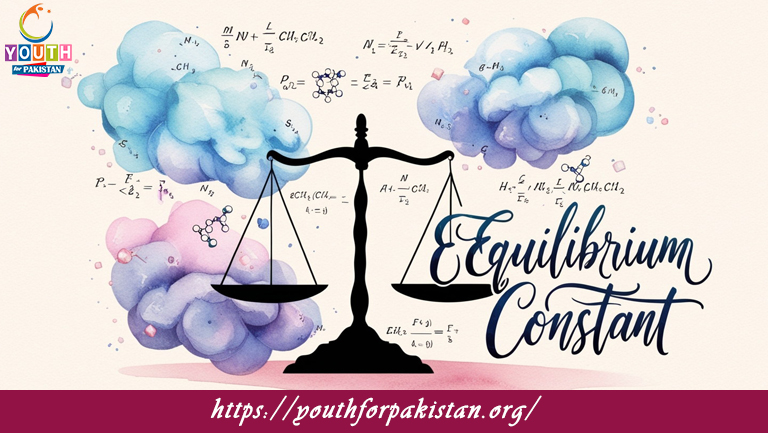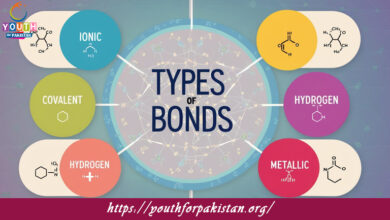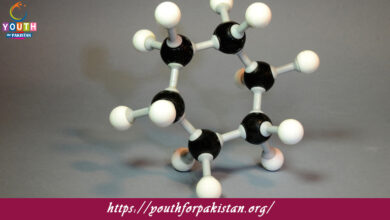Equilibrium Constant MDCAT Quiz with Answers

Equilibrium Constant MDCAT Quiz is the numerical value that describes the ratio of concentrations of products to reactants at equilibrium for a reversible chemical reaction. The concept is very important in understanding the behavior of reactions at equilibrium and is very crucial in predicting whether a reaction will favor the formation of products or reactants under certain conditions. The equilibrium constant is very essential for MDCAT students because it gives insight regarding the position of equilibrium and thus helps in solving problems related to chemical reactions.
Le Chatelier’s Principle and the Equilibrium Constant
Le Chatelier’s Principle allows us to predict how a change in concentration, temperature, or pressure will affect the position of equilibrium. For instance, if the concentration of a reactant is increased, the system will shift toward the products to offset the change. Similarly, changes in temperature can influence the value of the equilibrium constant.
For MDCAT students, mastering the concept of the Equilibrium Constant is essential for solving problems that involve calculating equilibrium concentrations, predicting the direction of the reaction, and applying Le Chatelier’s Principle. The equilibrium constant is often tested in the MDCAT Quiz, and understanding its significance allows students to solve complex reaction equilibrium problems effectively.
MDCAT Quiz on Equilibrium Constant
The MDCAT Quiz on the Equilibrium Constant helps students test their understanding of how to calculate and interpret K, as well as how to apply the equilibrium constant in different scenarios. The quiz may include questions about solving equilibrium problems, calculating concentrations at equilibrium, and determining the effect of changes in conditions on the equilibrium constant. By practicing with this quiz, students will strengthen their understanding of equilibrium concepts and be better prepared for questions in the MDCAT exam.
Free Flashcard for Equilibrium Constant
Our Free Flashcard for the Equilibrium Constant provides a quick review of the key concepts, including how to write the equilibrium constant expression, how to interpret the value of K, and how Le Chatelier’s Principle relates to equilibrium shifts. Examples of calculating the equilibrium constants for different types of reactions are also included to help the students solidify the concepts. The flashcards are very instrumental in enabling a quick review of the material and significantly increasing readiness to tackle the MDCAT exam with equilibrium-related questions.

The equilibrium constant (K) is based on the concentrations of __________.
Gaseous and aqueous species

The equilibrium constant expression includes the concentration of __________.
Gaseous and aqueous substances

The equilibrium constant for a reaction is calculated from the concentrations of __________.
Reactants and products

If the concentration of reactants is increased, the equilibrium constant __________.
Remains the same

The equilibrium constant expression for the reaction aA+bB⇌cC+dDaA + bB rightleftharpoons cC + dDaA+bB⇌cC+dD is __________.
K=[C]c[D]d[A]a[B]bK = frac{[C]^c[D]^d}{[A]^a[B]^b}K=[A]a[B]b[C]c[D]d

For an exothermic reaction, if the temperature is increased, the equilibrium constant __________.
Decreases

The equilibrium constant expression includes __________ in terms of concentrations or partial pressures.
Products and reactants

When the concentrations of reactants and products are equal, the equilibrium constant is __________.
Equal to 1

For the reaction 2A+B⇌2C+D2A + B rightleftharpoons 2C + D2A+B⇌2C+D, the equilibrium constant expression is __________.
K=[C]2[D][A]2[B]K = frac{[C]^2[D]}{[A]^2[B]}K=[A]2[B][C]2[D]

The equilibrium constant expression for the reaction 2A⇌B+C2A rightleftharpoons B + C2A⇌B+C is __________.
K=[B][C][A]2K = frac{[B][C]}{[A]^2}K=[A]2[B][C]

If the pressure is increased, the equilibrium constant for a gaseous reaction will __________.
Remain unchanged

The equilibrium constant expression for a reaction in gaseous phase is written in terms of __________.
Partial pressures

The equilibrium constant for a reaction at equilibrium depends on the __________.
Stoichiometry of the reaction

If a system at equilibrium is subjected to a change in pressure, the equilibrium constant __________.
Remains the same

The equilibrium constant for a reaction can be found from __________.
The concentrations of the reactants and products

The equilibrium constant is calculated using the concentrations of __________.
Gaseous and aqueous substances
Experience the real exam environment with our expertly designed collection of over 25,000 MCQs MDCAT Mock Tests.





